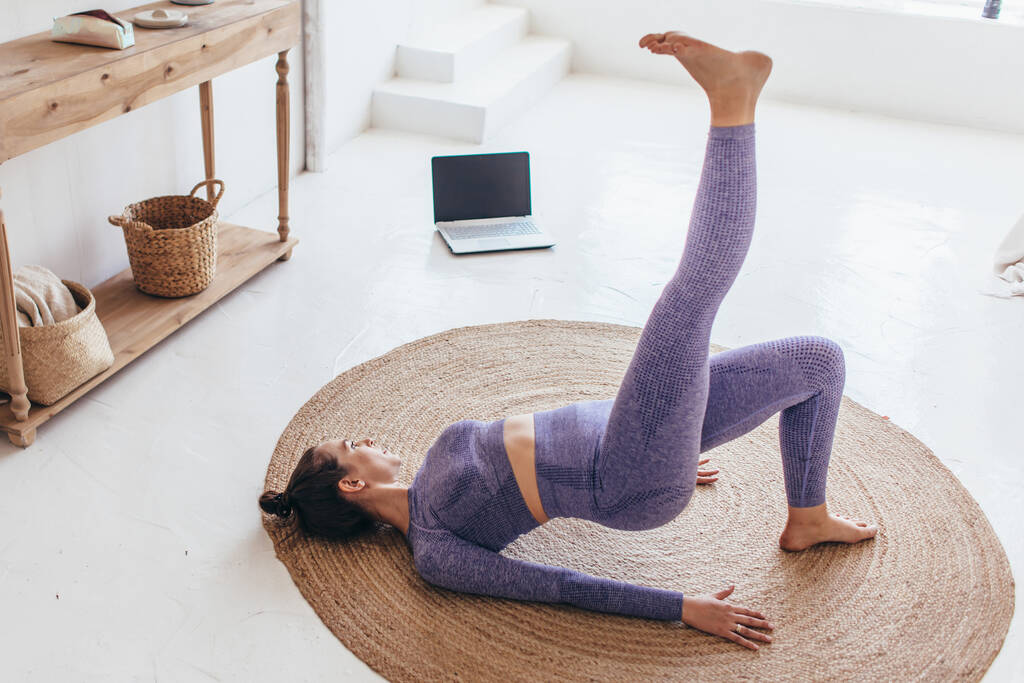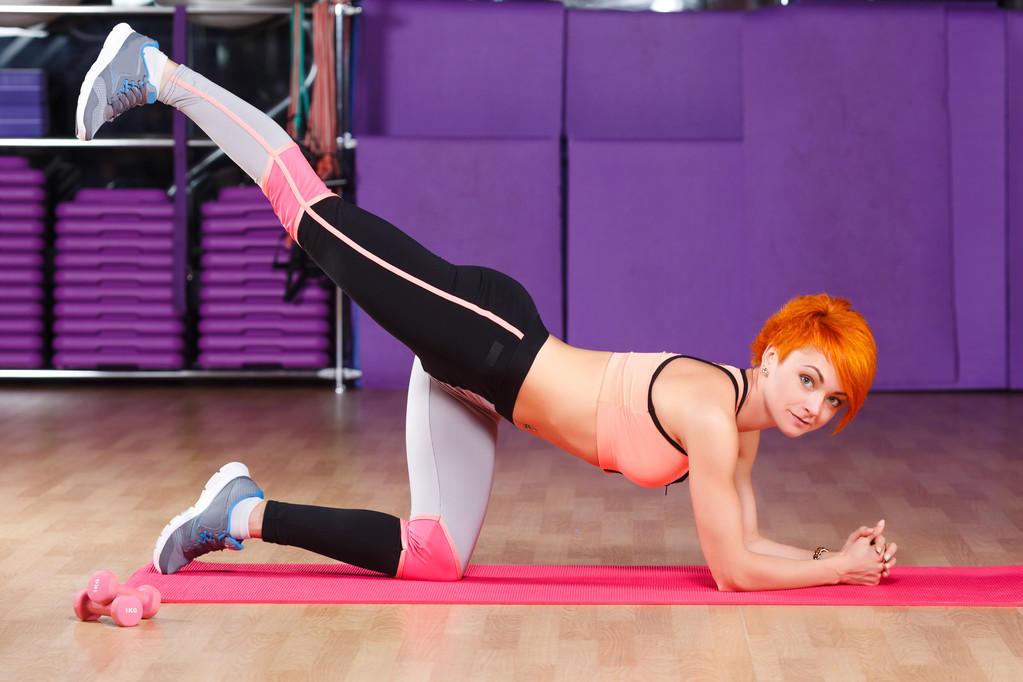Mastering the Single-Leg Glute Bridge: Unleash the Benefits with Expert Technique
09/18/2023

Are you ready to take your glute workout to a whole new level? Look no further than the single-leg glute bridge! This exercise may seem simple, but don't be fooled - it's a powerhouse move for strengthening and toning your glutes. In this article, we'll explore the benefits of the single-leg glute bridge, perfect your form, and learn how it compares to other glute exercises. So let's dive in and unleash the benefits of this expert technique!

Exploring the Benefits of the Single-Leg Glute Bridge
Before we dive into the nitty-gritty of perfecting your single-leg glute bridge, let's take a moment to appreciate the many benefits this exercise has to offer. First and foremost, the single-leg glute bridge targets your glutes like no other. By isolating one leg at a time, you'll activate those glute muscles and build strength like never before.
But the benefits don't stop there! The single-leg glute bridge also helps improve your balance and stability. By relying on one leg at a time, you'll challenge your core and engage those smaller stabilizing muscles. Plus, it's a low-impact exercise, making it great for those with joint issues or mobility limitations.
Additionally, the single-leg glute bridge can be a valuable tool for athletes looking to enhance their performance. By strengthening the glutes, this exercise can improve power and explosiveness in movements such as jumping, sprinting, and changing direction. It can also help prevent injuries by stabilizing the hips and knees.
Furthermore, incorporating the single-leg glute bridge into your workout routine can have aesthetic benefits as well. By targeting the glutes, this exercise can help lift and tone the buttocks, giving you a more sculpted and defined appearance.
How to Perfect Your Single-Leg Glute Bridge Form
Now that we know why the single-leg glute bridge is such a fantastic exercise, let's work on perfecting our form. Start by lying flat on your back with your knees bent and feet flat on the ground. Lift one leg off the ground, keeping your knee bent at a 90-degree angle.
Engage your glutes and press through your heel to lift your hips off the ground, creating a straight line from your knee to your shoulder. Hold the top position for a moment, squeezing your glutes, before slowly lowering back down. Repeat on the other leg.
Remember, it's important to maintain proper form throughout the exercise. Keep your core engaged, avoid arching your lower back, and focus on squeezing your glutes at the top of the movement. Trust us, your glutes will thank you!
To make the single-leg glute bridge more challenging, you can add resistance by placing a weight or resistance band on your hips. This will increase the intensity and further stimulate muscle growth.
As with any exercise, it's essential to listen to your body and start with a weight or resistance level that is appropriate for your fitness level. Gradually increase the difficulty as you become stronger and more comfortable with the movement.
Incorporating the single-leg glute bridge into your workout routine can be done in various ways. You can perform it as a standalone exercise, or you can incorporate it into a circuit or superset with other lower body exercises. Experiment with different variations and rep ranges to keep your workouts challenging and exciting.
Lastly, don't forget to stretch and cool down after your workout. This will help prevent muscle tightness and promote flexibility. Stretching the glutes, hamstrings, and hip flexors can be particularly beneficial after performing the single-leg glute bridge.
Targeted Muscles in the Single-Leg Glute Bridge
Now that you've mastered the single-leg glute bridge form, let's dive deeper into the specific muscles this exercise targets. As the name suggests, the primary focus is on your glute muscles, specifically the gluteus maximus. This is the largest muscle in your buttocks and plays a crucial role in hip extension, which is essential for activities like walking, running, and lifting.
But the benefits don't stop there! The single-leg glute bridge also engages your hamstrings, quadriceps, and even your core muscles. By adding this exercise to your routine, you'll be building strength and stability all over your lower body.
When performing the single-leg glute bridge, your hamstrings are activated as they work to stabilize your hips and maintain the proper alignment of your body. This muscle group, located at the back of your thighs, helps in knee flexion and hip extension.
In addition to the hamstrings, the quadriceps, located at the front of your thighs, are also engaged during this exercise. These muscles play a vital role in knee extension and are crucial for activities like walking, running, and jumping.
Furthermore, the single-leg glute bridge requires you to engage your core muscles to maintain stability and balance. Your core muscles, including the rectus abdominis, transverse abdominis, and obliques, work together to support your spine and maintain proper posture.
Strengthening Your Glutes with Single-Leg Glute Bridges
If you're looking to tone and strengthen your glutes, the single-leg glute bridge should be your go-to exercise. By isolating one leg at a time, you'll activate those glute muscles like never before. Regularly incorporating this exercise into your routine will help you achieve that firm and lifted booty you've always dreamed of!
In addition to the aesthetic benefits, strengthening your glutes can also improve your overall athletic performance. Strong glutes contribute to better hip stability, which can enhance your performance in activities such as running, jumping, and weightlifting. They also play a crucial role in preventing injuries, as weak glutes can lead to imbalances and compensations in other muscles.
Moreover, strong glutes can help alleviate lower back pain. When your glute muscles are weak, other muscles, such as the lower back muscles, may have to compensate, leading to strain and discomfort. By strengthening your glutes with exercises like the single-leg glute bridge, you can reduce the risk of lower back pain and improve your overall posture.
Remember, consistency is key when it comes to seeing results. Aim to incorporate the single-leg glute bridge into your workout routine at least two to three times a week. As you progress, you can increase the difficulty by adding resistance, such as using a resistance band or holding a dumbbell on your hips.
Single-Leg Glute Bridge vs. Regular Glute Bridge: Which is Better?
Now you might be wondering, what's the difference between a single-leg glute bridge and a regular glute bridge? Both exercises target your glutes, but there are a few key differences to consider.
The single-leg glute bridge, as the name suggests, focuses on one leg at a time. This isolation allows for greater activation of the glute muscles and lets you work on any imbalances between your legs. On the other hand, the regular glute bridge involves both legs and is a great option if you're just starting or prefer a less challenging exercise.
Ultimately, the choice between the two depends on your fitness goals and personal preference. If you're ready to take your glute game to the next level, give the single-leg glute bridge a try!
Understanding the Difference Between Glute Bridges and Hip Thrusts
Glute bridges and hip thrusts are two popular exercises that often get confused. While they both target your glutes, there are some key differences to be aware of.
Comparing the Benefits of Glute Bridges and Hip Thrusts
Glute bridges and hip thrusts both work your glutes, but they do so in slightly different ways. Glute bridges primarily focus on hip extension, while hip thrusts involve both hip extension and spinal extension. This means that hip thrusts may place a bit more emphasis on your glutes and hamstrings.
Additionally, hip thrusts often require the use of a bench or elevated surface to prop your upper body. This can make them a bit more challenging and require more stability. On the other hand, glute bridges can be done on the ground, making them accessible to everyone.
Ultimately, both exercises have their benefits, so it's worth including both in your glute workout routine. Mix it up and see which one you prefer!
Choosing the Right Glute Exercise: Kas Glute Bridge vs. Hip Thrust vs. Single-Leg Glute Bridge
With so many glute exercises out there, it can be tough to decide which one is right for you. Let's take a closer look at three popular options: kas glute bridge, hip thrusts, and single-leg glute bridges.
- Kas Glute Bridge: The kas glute bridge is a variation that involves placing a resistance band just above your knees. This added resistance helps to activate your glute muscles even more, making it a great option for those looking for an extra challenge.
- Hip Thrusts: As we discussed earlier, hip thrusts involve both hip and spinal extension. They can be done with or without added weight and are an excellent exercise for building glute strength and power.
- Single-Leg Glute Bridge: If you're looking to target your glutes with precision, the single-leg glute bridge is the way to go. By isolating one leg at a time, you'll challenge your muscles in a whole new way and improve any imbalances between your legs.
Each exercise has its unique benefits, so why not try all three and see which one brings you the best results?

Alternatives to the Single-Leg Glute Bridge
If you're looking to switch things up and add some variety to your glute workout, we've got you covered! Here are a few alternatives to the single-leg glute bridge that you can incorporate into your routine:
Variations to Spice Up Your Glute Workout
1. Banded Glute Bridge: Add a resistance band just above your knees to increase the difficulty and activate your glutes even more.
2. Barbell Hip Thrust: Instead of using your body weight, add a barbell to your hip thrust for a more challenging workout.
3. Bulgarian Split Squat: This exercise targets your glutes, quads, and hamstrings. It's a fantastic alternative if you're looking for a compound movement.
Try These Exercises for Glute Activation and Strength
If you want to activate your glutes before your workout or focus on strengthening them further, these exercises are a great place to start:
1. Clamshells: Lie on your side with your knees bent and feet together. Lift your top knee while keeping your feet together, engaging your glutes as you do so.
2. Fire Hydrants: Get down on all fours and lift one leg out to the side, keeping your knee bent at a 90-degree angle. Squeeze your glutes as you lift, then lower back down.
3. Step-ups: Find a sturdy step or bench and step up onto it, focusing on engaging your glutes as you lift your bodyweight.
By incorporating these exercises into your routine, you'll be well on your way to strong and sculpted glutes!
Taking Your Glute Bridges to the Next Level: Two-Up, One-Down Glute Bridge
Now that you've mastered the single-leg glute bridge, it's time to kick things up a notch with the two-up, one-down glute bridge. This advanced variation targets your glutes in a whole new way.
To perform the two-up, one-down glute bridge, start in the regular glute bridge position. Lift both legs off the ground, keeping your knees bent. Then, lower one leg back down while maintaining the bridge position with the other leg lifted. Alternate between legs, focusing on engaging your glutes throughout the movement.
This challenging exercise will test your strength and stability like never before. Give it a try and watch your glutes reach new heights!
There you have it - everything you need to know to master the single-leg glute bridge and unleash the incredible benefits it has to offer. So go ahead, give it a try, and get ready to sculpt your glutes to perfection. Trust us, your booty will thank you!

 Back to Blog
Back to Blog